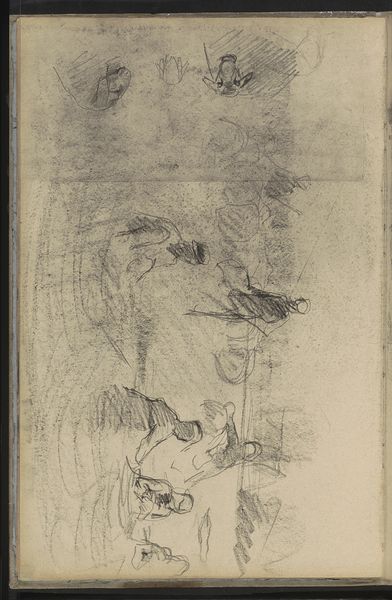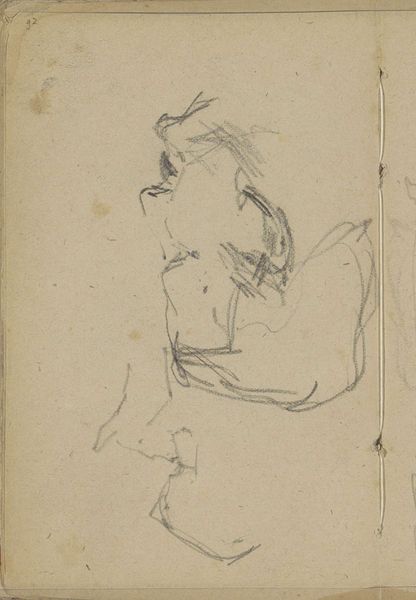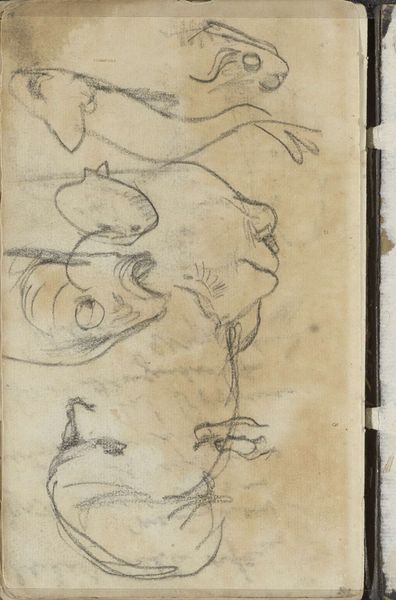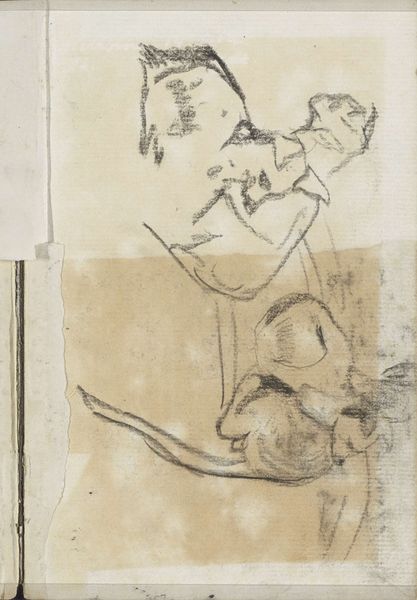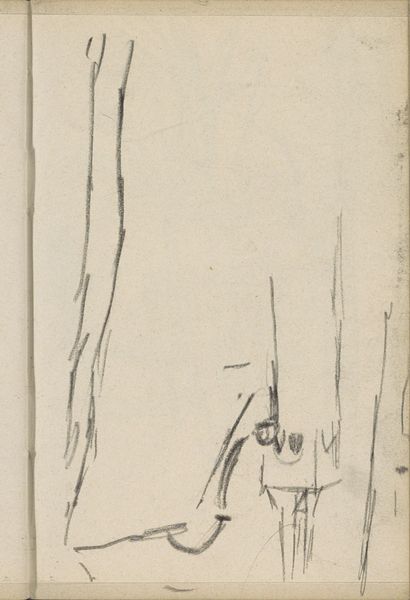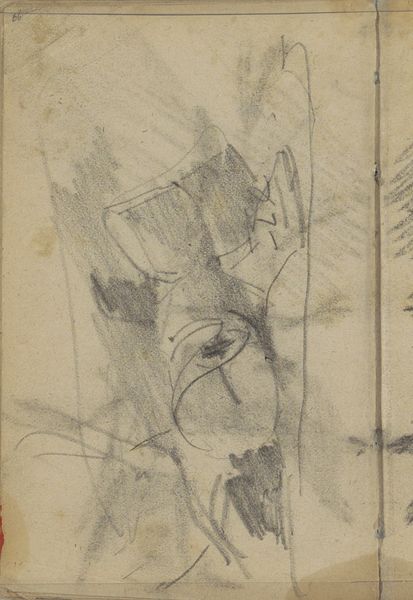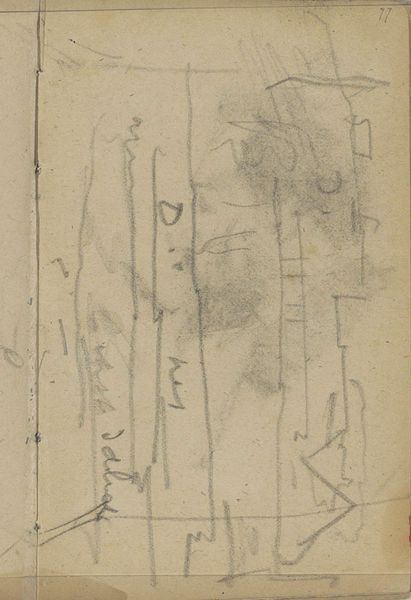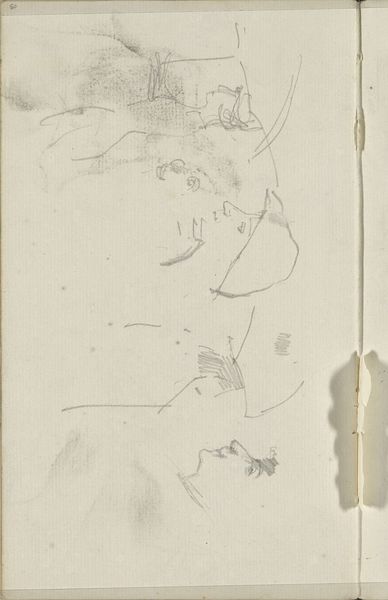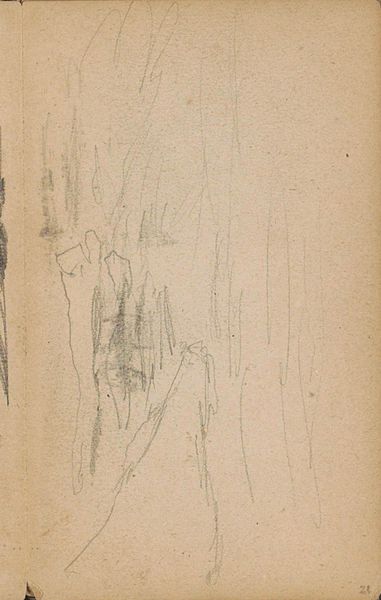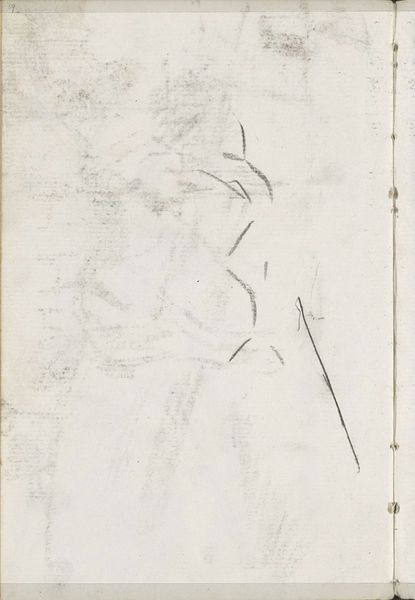
drawing, pencil
#
portrait
#
drawing
#
impressionism
#
pencil
Copyright: Rijks Museum: Open Domain
Curator: Here we have "Rider and a Male Head with Historical Helmet," a pencil drawing by George Hendrik Breitner, dating from around 1880 to 1882. Editor: It's got such an immediacy. A real glimpse into a sketchbook. Rough and ready, and incredibly atmospheric. You can almost smell the paper, and the lead from the pencil! Curator: Indeed! Breitner's commitment to capturing fleeting moments through readily available and inexpensive means reflects the growing democratization of art production during this period. Sketchbooks provided spaces for artists like Breitner to investigate subjects and ideas freely. Editor: Look at the way he's used those light pencil strokes, just barely there in places. The weight feels very present in the horse—but also very light in touch! The process, that's what draws me in; this raw, immediate interaction. Curator: Well, Breitner was particularly invested in the visual culture of his time and the role of military imagery within it. His military service deeply impacted his vision, influencing his frequent depiction of soldiers. One should really consider the historical climate, as militarism played a powerful public role during Breitner’s time. Editor: But to achieve that speed, to document in that way... it suggests that even the elite military subjects were treated with some kind of egalitarian quality, right? I'm fascinated by the material reality. The accessibility of paper and pencil makes artistic expression much less restricted and almost performative. Curator: Absolutely. Breitner was keen on documenting aspects of modern life as he found them and quickly turn that into social commentaries and visual statements. It would be short sighted not to regard these sketches as critical components for this objective. Editor: This also has a beautiful ambiguity – this isn't about polished detail or a grand commission. The value of art lies in the experience of its making, especially when using a simple tool such as a pencil. I can feel the artist's own gaze, a quick capture with graphite. Curator: By investigating the society and politics of imagery through his works, it's plain to see Breitner's goal was to document a visual reflection of society. Editor: Right, and by stripping the artwork from traditional ideas, he reveals its physical core; a tactile meeting of pencil and paper, resulting in social statements! This process embodies not just the making of an image, but the making of meaning.
Comments
No comments
Be the first to comment and join the conversation on the ultimate creative platform.

